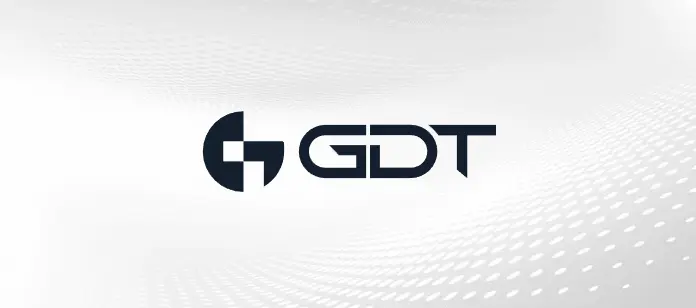Are your security tools working for you?
Choosing the right tools plays a critical role in your organization’s success. But the unfortunate reality is that selecting, implementing, and integrating tools is easier in theory than in practice. All too often, I see organizations juggling disconnected tools, drowning in alerts, and spending far more time than they should stitching together data. If these problems sound familiar, Splunk Enterprise Security (ES), especially when combined with the broader Splunk ecosystem, might deserve a closer look. It can be an excellent way to bridge the gap between your security and IT ops organizations’ needs.
How Splunk Enterprise Security answers questions teams are asking
When security and IT operations leaders evaluate a platform like Splunk ES, they’re not simply looking for another tool to add to the stack. They want answers to the problems that bog down their teams every day: constant alerts, long resolution times, compliance headaches, performance issues, and the ongoing struggle for visibility. Splunk ES combines real-time monitoring, automation, and scalable architecture to tackle those challenges head-on.
At a glance: Splunk Enterprise Security capabilities
- Real-time security and infrastructure monitoring*
- Next-generation threat detection and anomaly identification
- Proactive threat hunting and root cause analysis*
- Streamlined incident and event management
- Advanced investigations and performance forensics*
- Intelligent risk-based alerting
- Continuous compliance and audit reporting
- Automated response and workflow orchestration
*Splunk ES and Splunk ITSI/Observability
But how do these capabilities serve both security and IT operations? Below, I address a few ways that Splunk ES supports both teams.
Security teams ask: How can we detect and respond faster?
Splunk ES can centralize logs, threat intelligence, and behavioral analytics into a single view, so teams don’t need to spend time piecing together data from disparate tools. Automated playbooks and Splunk SOAR can then reduce manual intervention by triggering resolution steps such as alerting the right teams, creating ITSM tickets, and initiating corrective actions. This leads to faster investigations, streamlined responses, and fewer incidents slipping through the cracks.
Security teams ask: How can we reduce alert fatigue?
Splunk can also decrease the noise that many organizations contend with. Risk-based alerting prioritizes alerts by leveraging user and asset risk scores. This cuts down on static and surfaces what analysts care about most, so they can focus their time on mitigating genuine threats.
Security and IT ops ask: How can we stay compliant without slowing down?
Splunk adheres to industry-standard security protocols, including encryption in transit and at rest, and provides role-based access control (RBAC). Additionally, Splunk ES produces audit-ready reports and continuous monitoring for frameworks such as HIPAA, GDPR, and PCI-DSS. That means compliance becomes a byproduct of well-managed operations. IT ops teams can leverage those same data sets as evidence of system availability and reliability.
IT ops teams ask: How can we track the health and reliability of our systems and applications?
For IT operations teams, Splunk provides continuous monitoring of servers, applications, storage, and power systems to ensure comprehensive visibility across the entire IT infrastructure. Splunk IT Service Intelligence (ITSI), Splunk Enterprise, and Splunk Observability allow organizations to collect and analyze real-time data and track key performance metrics like CPU, memory, and disk utilization. For applications, Splunk offers insights into performance, errors, and response times.
Additionally, storage and power systems can be monitored for capacity, health, and uptime, ensuring that critical resources are always functioning optimally. This unified monitoring solution identifies issues early, enabling faster resolution, contributing to greater resilience, and minimizing downtime across the IT environment.
IT ops teams ask: How can we troubleshoot faster?
Reducing detection and response times can often be the difference between a minor event and a catastrophic incident. When incidents cross security and operations boundaries, Splunk delivers the investigation timeline and context needed to connect the dots. SOC and IT ops teams can work from the same correlated data to identify whether the issue stems from a misconfigured change, a failing system component, or malicious activity. Root cause analysis is accelerated, and downtime is reduced.
IT ops teams ask: How do we scale as our environment grows?
Splunk is designed to be highly scalable, capable of supporting growing IT infrastructures without performance degradation. Whether an environment grows in the number of servers, workstations, or cloud instances, Splunk’s distributed architecture can scale horizontally to handle increased data volumes. With Splunk Cloud and Splunk Enterprise, the platform ensures that monitoring remains robust and responsive, even as your IT footprint expands, making it a future-proof solution for scaling operations.
How Splunk Enterprise Security helped a healthcare organization
A healthcare organization I worked with is a good example that illustrates the value that Splunk ES can bring to both security and IT operations. Thanks to integration with tools like Epic EMR, ITSM, and cloud platforms, the organization achieved real-time visibility into performance degradation, suspicious activity, attempted cyberattacks, and user behavior analytics. The same data also supported root cause analysis for outages while simplifying HIPAA and PCI compliance reporting. The result was a unified view that reduced noise, improved response, and supported uptime.
So, could Splunk ES be right for you?
While security and IT operations are often treated as separate functions, the reality is that their challenges overlap. Performance issues can mask threats, and security blind spots can cause downtime. Splunk Enterprise Security can bridge that gap by providing shared visibility, automation, and context.
That said, Splunk ES isn’t an out-of-the-box silver bullet, nor is it the right fit for every organization. Furthermore, tailoring the platform to your environment requires effort and expertise, especially if you want to avoid recreating the same noise and issues you were trying to solve.
That’s where an expert partner like GDT can help. We’ve empowered many organizations to move beyond siloed tools and disjointed processes to achieve unified monitoring and faster incident response. Plus, GDT has the certifications, expertise, and demonstrated success to help you and your organization implement, configure, and integrate solutions like Splunk.
If you’re ready to explore whether Splunk ES or another tool is right for your business, our cybersecurity workshop is a great place to start. During this custom workshop, we explore your organization’s needs, challenges, and desired end-state, along with your existing tools and capabilities, to help you understand how to consolidate tools, either using your existing toolsets or under another toolset like Splunk ES. It’s complimentary and free of obligation. Learn more and schedule your cybersecurity workshop here.



